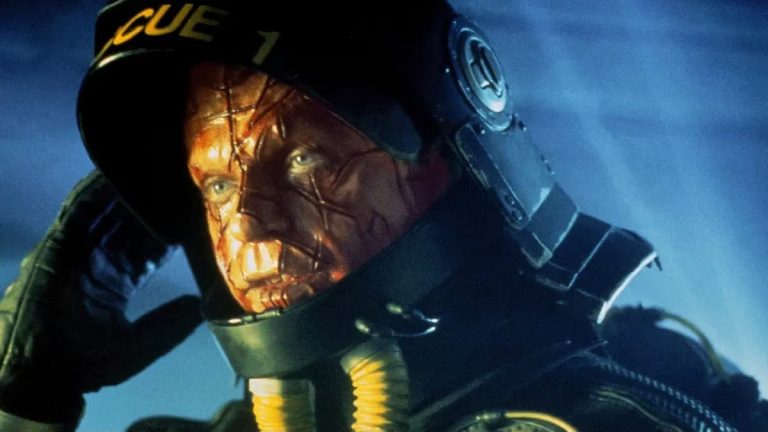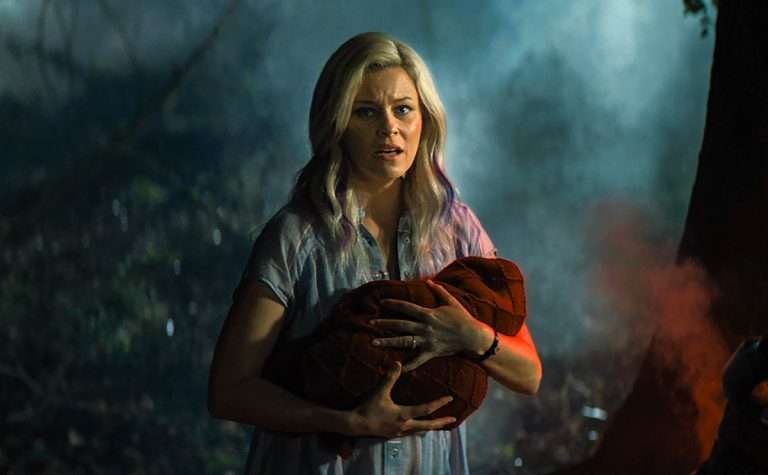Unfounded hoaxes have lingered throughout society since long before the Tinfoil-Hat Troopers turned their attention towards vaccines. One of the more longstanding—and, relatively speaking, fairly innocent—rumors to spread in that respect is the notion that the 1969 NASA moon landing was, actually, a staged production. In the grand scheme of things, it’s innocuous enough yarn to let the crackpots unravel it to their heart’s content—Stanley Kubrick directed it and dropped hints of his involvement throughout “The Shining”? Whatever you say, buddy—but “Fly Me to the Moon” plays to the secrecy of such a hypothetical and gives it the creative jump-start it needs to get a few good laughs. At least, that’s what’s in the blueprint…
In practice, Greg Berlanti’s sterile rom-com positions the fake moon landing as one of several narrative nexus points for a story more broadly about the marketing campaign to make NASA an attractive venue for public funding amidst several failed launch attempts, some of them resulting in the deaths of those involved. It’s a difficult sell, and one that “Fly Me to the Moon” attempts to achieve in paying appropriate respects to the lives lost on the first Apollo mission while still diverting most of the attention to the hijinks of slapping Omega ads on the first ever photos of Earth from space. If the film itself then feels like the product of extensive focus-grouping and pie charts shown in executive offices, by what metric do we determine whether this mission was a success?
The year is 1969—right up to the wire of the timeframe that JFK gave the American people for when the US would be the first nation to send a man to the moon and back—and a severely underfunded NASA appears no closer to achieving success than they had across the rest of the decade. Cole Davis (Channing Tatum), head of the engineering program, is feeling the heat, but his no-nonsense approach to ensuring the safety of his crew doesn’t gel well with potential donors and the American public who see this venture as a relic of the past. Cue mysterious marketing savant Kelly Jones (Scarlett Johansson), who’s sent in by an even more mysterious government figure (Woody Harrelson, dusting off that ‘60s fedora once more) to spruce up the company’s image and ensure that the US flies laps around the Soviets in the increasingly disregarded Space Race.

The entire appeal of the Apple Studios production seems to be a tonal replication of the sort of squeaky clean, high-tech but low-design atmosphere of a 1960s advertisement; in theory, it is a perfect fit for a company whose entire mantra is advancement through the funnel of simplicity. In applying this formula to Rose Gilroy’s overcalculated rom-com script, however, the only era to which “Fly Me to the Moon” feels like a throwback is the mid-2000s, a time when Channing Tatum was known the world over for his distinct lack of charisma.
Not so much a testament to Tatum’s (lacking) ability as it is Berlanti’s own inability to play to the goofier comedic strengths the chiseled actor has spent the entire 2010’s honing, “Fly Me to the Moon” simply has no idea how to shoehorn its romantic comedy dynamic into what should be a fairly fitting premise for precisely the sort of meet-cute, chop-busting shenanigans that have dominated the genre for decades.
Johansson is really given the bulk of the film, a challenge to which she proves capable, her vintage bob-cut look given the chance to contrast against her distinctly modern aura. And while her pairing with Tatum seems like a perfectly calculated combination—a yet unseen matchup of well-liked, attractive actors—Berlanti is simply given too much to squeeze these characters into and not enough to squeeze out of the characters themselves. A romance like this needs chemistry powered by rocket fuel; this one seems content with a half-empty can of PAM cooking spray.

The spectre of the Apollo 1 disaster—in which astronauts Gus Grissom, Ed White and Roger B. Chaffee were killed in a horrific accident—hangs constantly over Tatum’s Davis; his character is said to have overseen the rehearsal test in which the cabin fire changed NASA’s trajectory for years to come. It’s a solemn, continuous reminder that Tatum honors with respect, and which the film clearly vies to treat the same way; the issue comes in trying to fit this reality into the rom-com outline in such a way that doesn’t fly in the face of the obviously fabricated cutesiness populating the rest of the film.
Johansson’s Jones has some demons of her own that get revealed as the film drags its way to a close, but with a lack of chemistry between her and Tatum, the solace they seem to find in one another reads more like a simulation that needs to be recalibrated with the real launch actually takes place. What a closer, more dedicated simulation would have shown was that “Fly Me to the Moon” is simply far too long to maintain its shallow interests and far too packed with successive climaxes to let those attempted emotional impacts land on smooth ground; what would have been wrong with streamlining this entire plot towards the fake moon landing scenario?
So long as Gerg Berlanti is able to let his actors exist in the innocent interactions that populate the film’s retro setting—Ray Romano finds himself especially well-suited for a film and role of this nature—Gilroy’s cluttered screenplay stays in steady enough orbit to avoid a post-takeoff disaster. For a film about the greater ambitions that drove its subjects to redefine the impossible, though, “Fly Me to the Moon” plays its cards about as safely as one could expect. When the most daring choice in your movie is a Colin Jost jump-scare, perhaps it’s time to leave the focus testing in the world of the film rather than throughout the process of its making.







![Wander [2020] Review – The paranoia of Conspiracy Theories](https://79468c92.delivery.rocketcdn.me/wp-content/uploads/2021/01/Wander-Tommy-Aaron-1-768x384.jpg)

